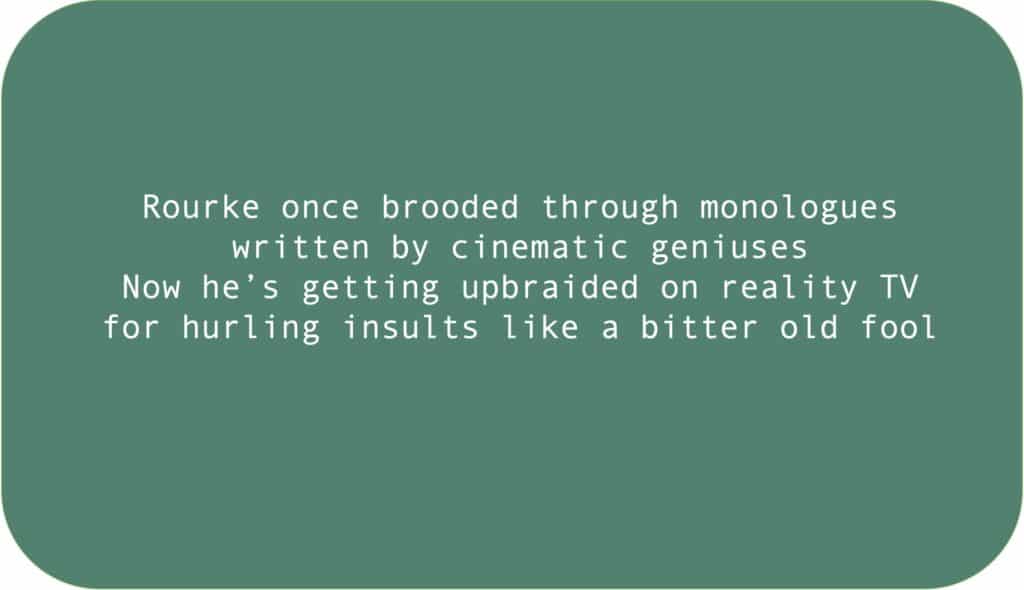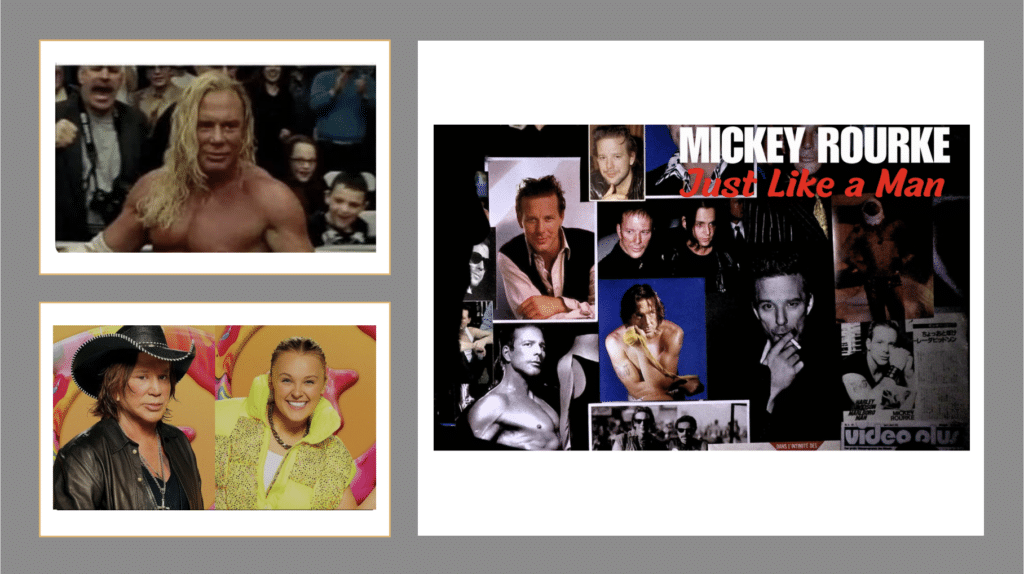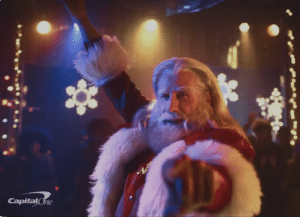
Act I: The dangerous charmer
Mickey Rourke was once the poster boy for tortured talent. His brooding, magnetic turns in The Pope of Greenwich Village and 9½ Weeks earned him comparisons to Marlon Brando. Men marveled that he could make vulnerability look dangerous. And women, well, they swooned.
But Rourke never met a spotlight he couldn’t flame out. Frankly, I always got the impression there was more typecasting than method to his acting.
Act II: Self-destruction with stints in surgery
By the ’90s, his off-screen antics led him to try professional boxing. He probably thought getting his demons pummeled was the tough guy’s version of therapy. The problem is that it left his once-rugged, leading man face looking like a pineapple.
Yet, he was so vain that his Sisyphean attempts to surgically repair his face turned into an ever-mutating art project. His self-consciousness soon hijacked promotional interviews, turning them into defensive rants. He projected his insecurities onto directors, co-stars, and even the press. Because only their shortcomings or professional agendas could explain why he wasn’t Hollywood’s golden boy anymore.
Instead of aging into gravitas, he became a walking cautionary tale: equal parts talent and tantrum.

Act III: The Wrestler and wasted resurrection
Then came The Wrestler, a grim, beautiful redemption tale that mirrored Rourke’s life so closely it felt like autobiography. For a moment, he was back: Awards buzz. Tears at podiums. A genuine sense that maybe, just maybe, he’d learned something.
In short, Rourke had his Pulp Fiction moment. It could’ve sealed his legacy. After all, John Travolta hit peak stardom in the ’70s with Saturday Night Fever, floundered through the ’80s, and got resurrected in the ’90s. Unlike Rourke, Travolta didn’t waste it.
 He aged into kitschy cool, not chaotic cringe. I need only refer you to those viral videos of him dancing with his daughter. Not to mention that Capital One “Holiday Night Fever” ad, where Travolta struts like Tony Manero now as Santa Claus.
He aged into kitschy cool, not chaotic cringe. I need only refer you to those viral videos of him dancing with his daughter. Not to mention that Capital One “Holiday Night Fever” ad, where Travolta struts like Tony Manero now as Santa Claus.
But Rourke torched the goodwill almost immediately. Strange roles. More unhinged interviews. Plastic surgeries so extreme he looked like the muse of a latter-day Dr. Frankenstein. Instead of sealing his legacy, The Wrestler became the coda to a cautionary tale. Here was an actor who once made pain look poetic. Now he’s making desperation look performative.
Epilogue: Reality TV clown show
So it has come to this. Rourke is now playing a caricature of himself on Celebrity Big Brother. Just gawking at the freak he’s become is probably enough to justify his appearance fee. But Rourke, being Rourke, had to lean into the same defensiveness that once torpedoed his films. Only that explains him hurling homophobic remarks and fat-shaming fellow contestants on camera.
It’s as damning as it is humiliating that JoJo Siwa felt compelled to rebuke and dismiss him on camera. After all, Siwa is a glitter-swathed Gen Z icon who wasn’t even born when 9½ Weeks came out. That’s not just a fall from grace. That’s a crash landing into cultural irrelevance.
The saddest part is that Rourke still thinks he’s a misunderstood artist. In truth, he’s just a geriatric rebel without a cause, fueled by bitterness, fading fame, and the kind of delusion only reality TV can monetize.
Once the rebel, now the relic.